“I’ve got ticks!” says Lauren diBiccari. “Two, maybe three.” As she blows gently on the cardinal’s neck and head, I can see two miniscule brown parasites clamped down amid the scarlet feathers.
Migratory birds don’t travel alone — they often carry ticks and tick-borne pathogens with them on their annual routes. Those ticks can provide important information on avian health and conservation, which is why I visited the migratory bird hotspot at Mad Island Marsh with the Smithsonian Migratory Bird Center. (See my previous blog for more information on the SMBC).
The data gathered by diBaccari and her colleagues is fueling researching by the SMBC and Texas A&M University on which ticks and tick-borne pathogens are traveling to the United States via neotropical songbirds.
Hitchhikers Across the Gulf
Each spring, millions of migratory birds stream northward into the U.S. from Central and South America, where they spent the winter. After enduring an often-perilous 18-to-24 hour crossing of the Gulf of Mexico in a single flight, these birds land along the coast to rest and refuel before continuing on to their breeding grounds.
“So many migrant birds come back and forth across the Gulf, but scientists actually know very little about what they are carrying with them,” says Emily Cohen, a postdoctoral researcher at SMBC and co-lead on the research.
But to figure out what species of tick this northern cardinal is carrying, first you need to tweeze them off the squirming bird.
But to figure out what species of tick this northern cardinal is carrying, first you need to tweeze them off the squirming bird.
Justine E. Hausheer
“I’ve got one… where’s the other?” asks SMBC research technician Tim Guida, as he gently tries to pull the ticks off the screeching cardinal. Understandably, the cardinal is not happy.
Holding the bird firmly, diBiccari blows around the cardinal’s head, face and neck to reveal the ticks. She explains that the birds are able to pry off ticks elsewhere on their body during normal preening, but they can’t reach these areas.
Deftly, Guida tweezes off the tick and pops it into a cap tube. A second miniscule, brown tick follows shortly. While the cardinal screeches in indignation again, Guida labels the tube with the species, date, and the bird’s unique band number — NOCA / 3.31.15 / 265151205.
At the end of the banding season in May, those ticks will head to Texas A&M University, where Cohen’s partner, assistant professor Sarah Hamer, will use a combination of morphological traits and genetic analysis to narrow down exactly which species of ticks this cardinal was carrying.
“Just answering the question ‘What species of tick is this?’ could take a week of lab work,” explains Hamer. “We can get down to the genus level under the microscope, but then to confirm the exact species we extract DNA by either removing a leg or grinding up the whole tick.”
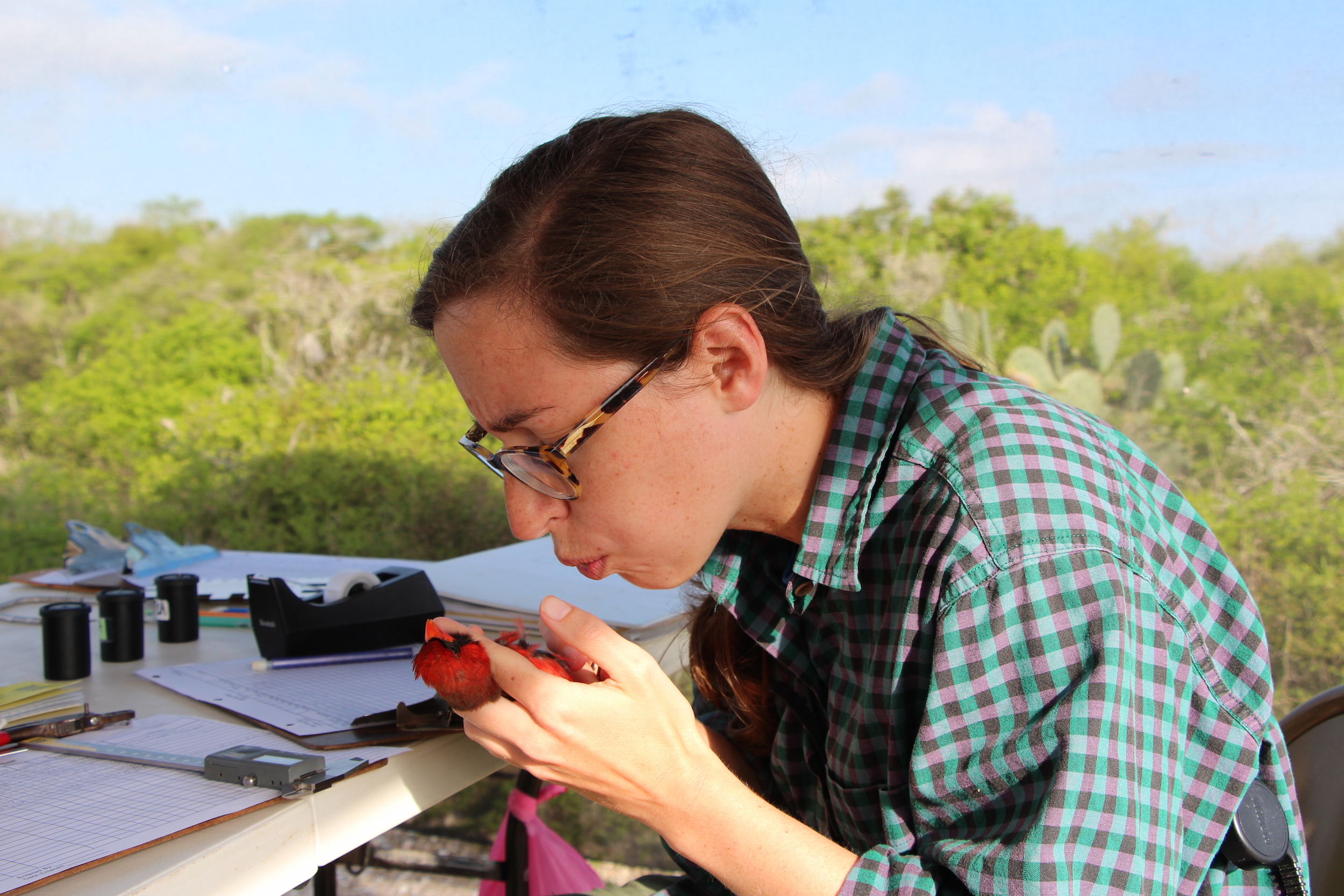
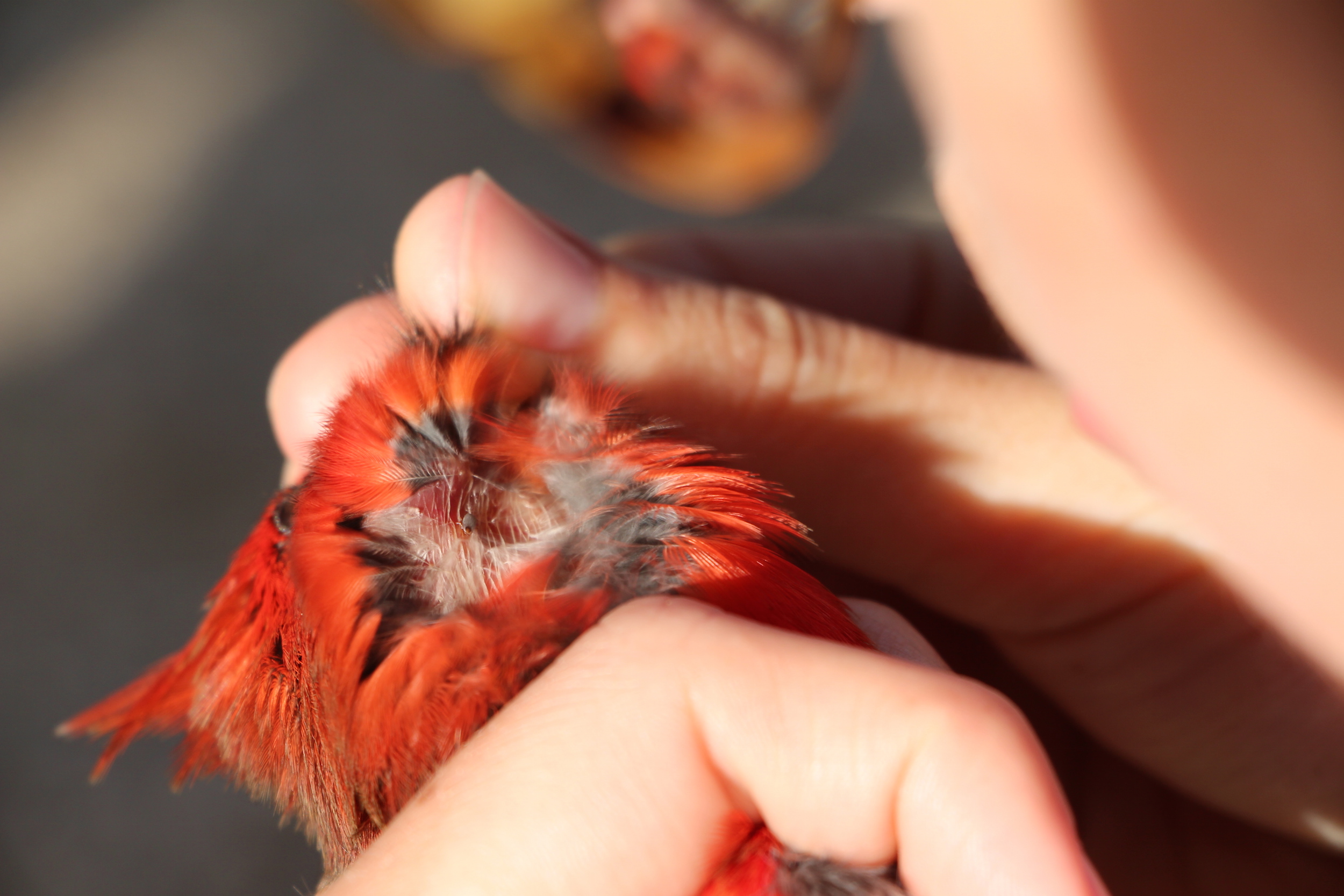
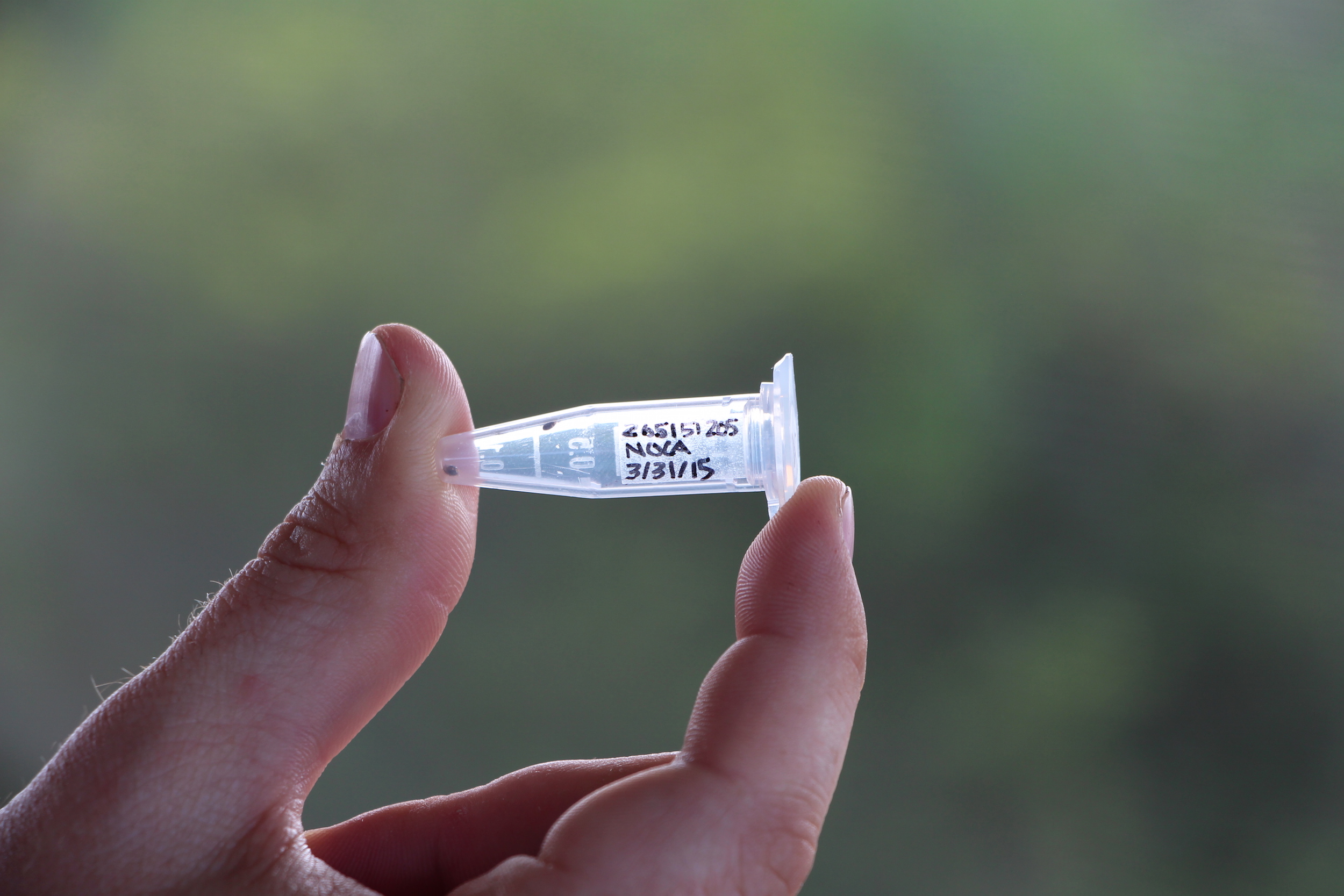
Blood Draws for Birds
But the ticks are only part of the story — the SMBC banders also collect a blood sample from each tick-infested bird to screen for pathogens that ticks can carry and transmit to the birds, or other wildlife.
diBiccari hands the cardinal to Guida, who receives a few well-aimed bites on his thumb as he carries it over to the blood station. Cradling the cardinal in his right hand, he spreads its right wing to reveal the nearly translucent skin over bird’s elbow. After swabbing the area with alcohol, Guida quickly pricks the bird’s skin with a needle.
A trickle of blood begins to flow, which he catches in a miniscule, narrow glass tube. The whole procedure is done in mere minutes, after which diBiccari and Guida weigh the bird and check to the make sure the bleeding has stopped.
“We have sugar and electrolytes on hand in case a bird gets woozy,” says Guida, “but that doesn’t happen often.”
We have sugar and electrolytes on hand in case a bird gets woozy, but that doesn’t happen often.
Tim Guida
Like the ticks, the cardinal’s blood sample will eventually make its way to Hamer’s lab for screening.
“We’re looking for rickettsia and borrelia,” says Cohen, “which are two pathogens that could potentially be harmful to humans.”
Rocky Mountain spotted fever and Lyme disease are two well-known members of these genera, but there are several other types of rickettsia and borrelia that are pathogens in both humans and animals.
Hamer explains that they can use genetics to identify the pathogens within the ticks themselves, but that the blood samples reveal whether or not the bird itself became infected with that pathogen. “It’s a different piece of puzzle,” she says.
Based on preliminary data, Hamer and Cohen’s group has detected seven different tick species on the birds, and only one of those is know to be established in U.S. — the other six species are newly documented neotropical ticks. What’s more, the group has identified pathogens within both the rickettsia and borrelia genus.
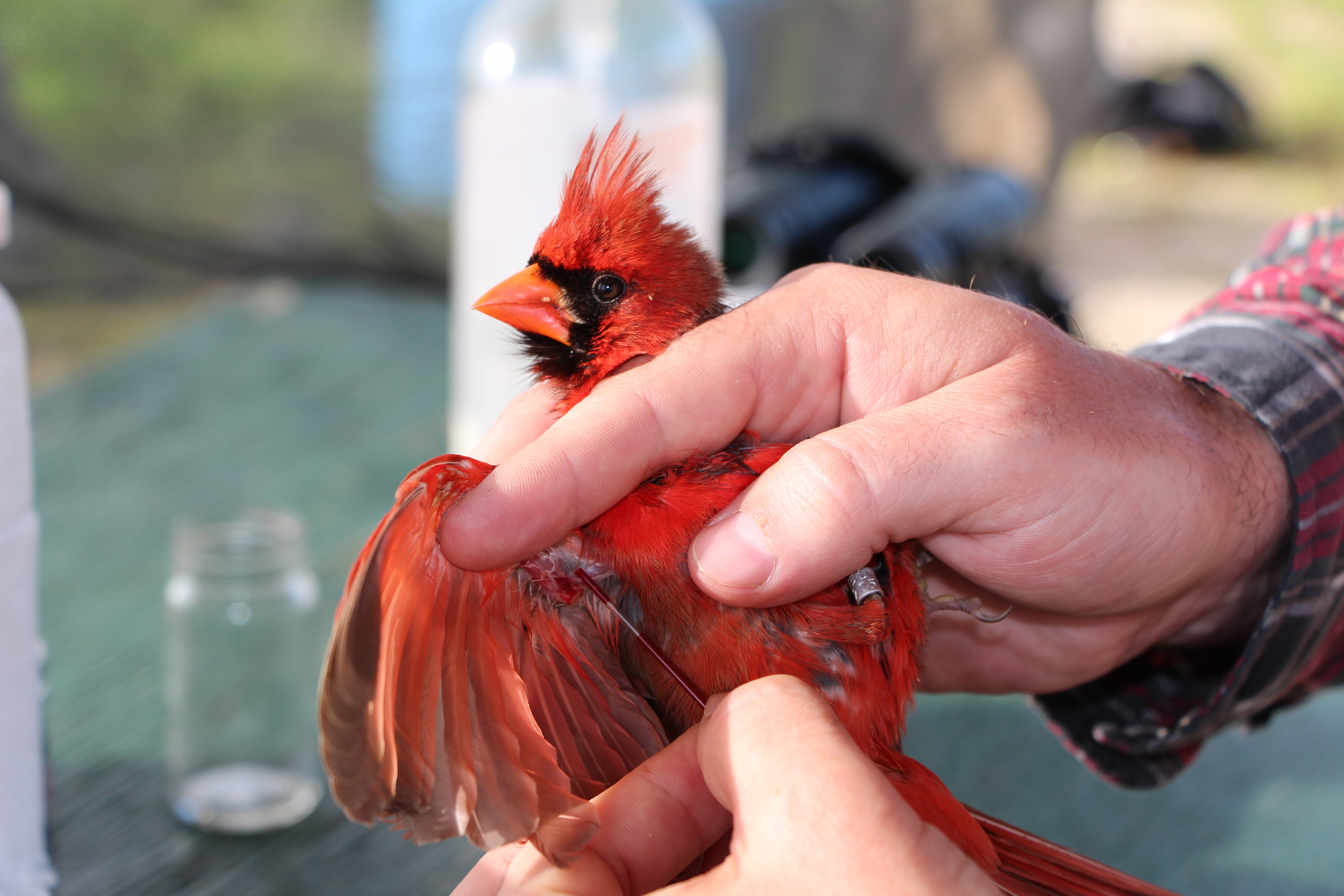
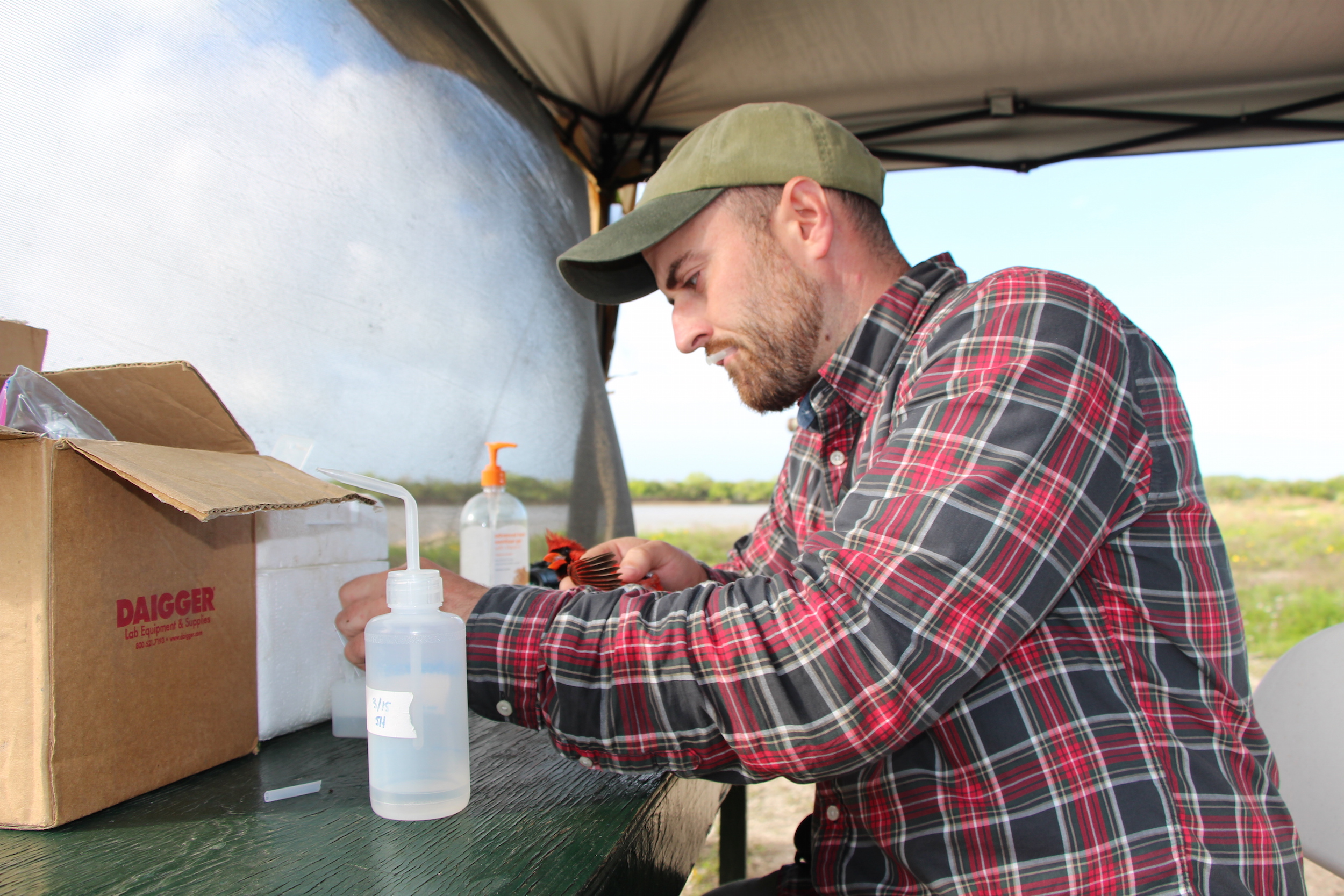
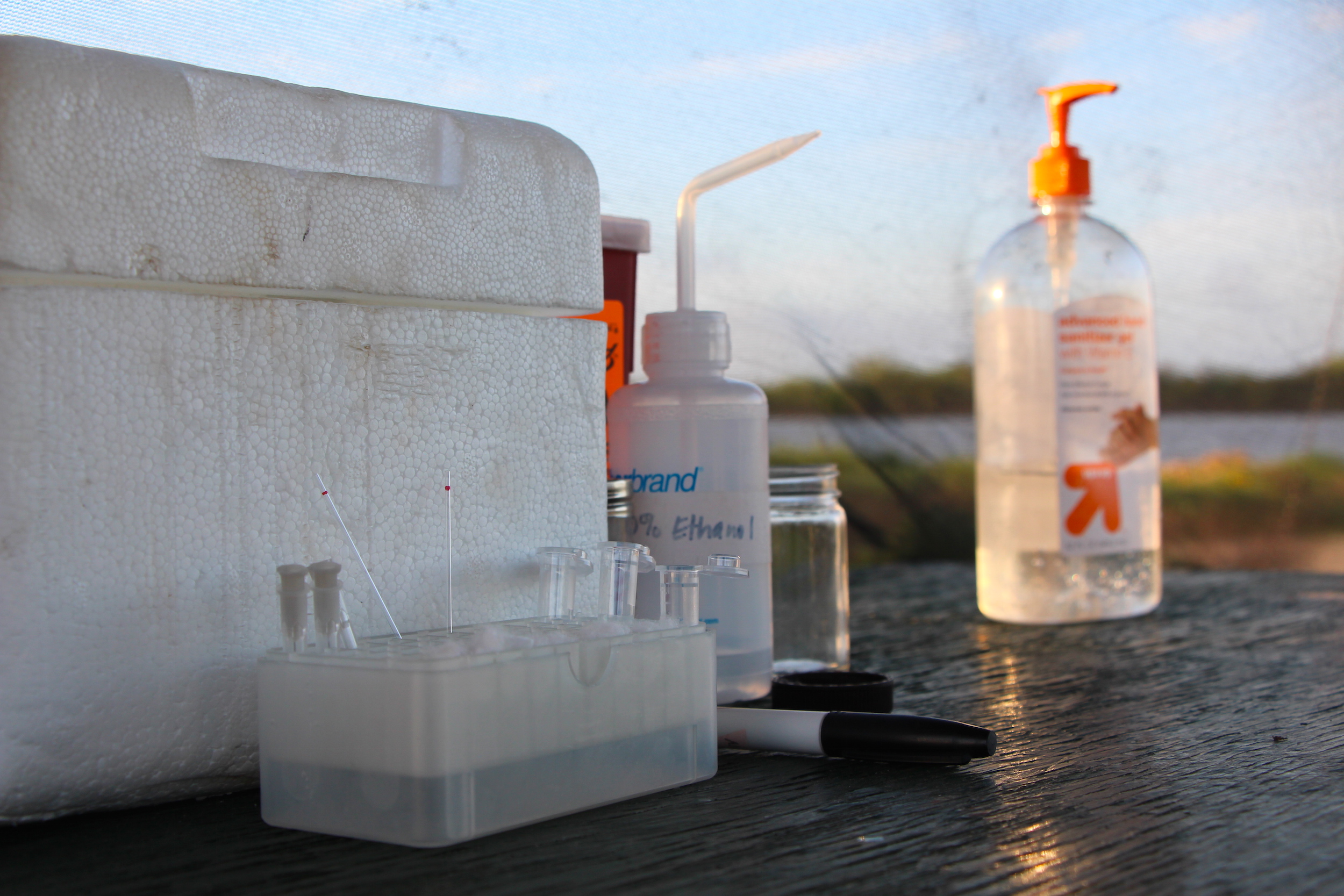

Watching the Next Wave
Hamer and Cohen’s data is providing ecologists one of the first glimpses into how tick species and the pathogens they carry spread across the landscape.
“These species aren’t recognized as established in the U.S., but maybe they will become established over time,” says Hamer. “Maybe as more birds move them in, environmental change might make the habitat suitable and the ticks will survive and spread.”
Host species play an important role in a tick’s ability to survive. Hamer says that some neotropical ticks feed on birds early in their life cycles, but then switch to other species, like giant anteaters, when they are adults. Without their Latin American hosts, the journey into the U.S. could be a dead-end for some ticks.
“But species are flexible,” says Hamer. “Could they feed on coyote or feral pigs instead of a giant anteater? We don’t know.”
“Given these different scenarios of climate change and species shifting their ranges, it will be interesting to see what happens,” she says. “I want to know if we recognize the early stages of the invasion and start thinking about what we should do.”
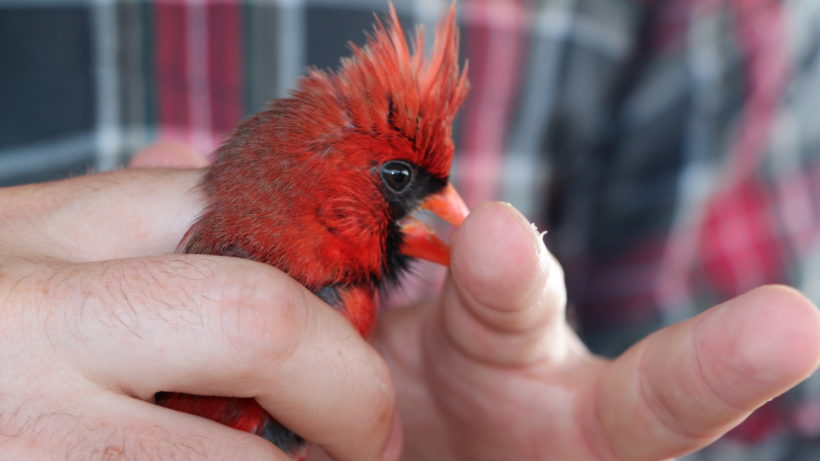
Sampling completed, Guida brings the cardinal out of the tent, shifting his grip so that he is only holding the bird’s legs. “Sometimes they choose to stay and bite you rather than fly free,” he adds.
True to form, the cardinal delivers a final nip to Guida’s thumb before dashing into the scrub.
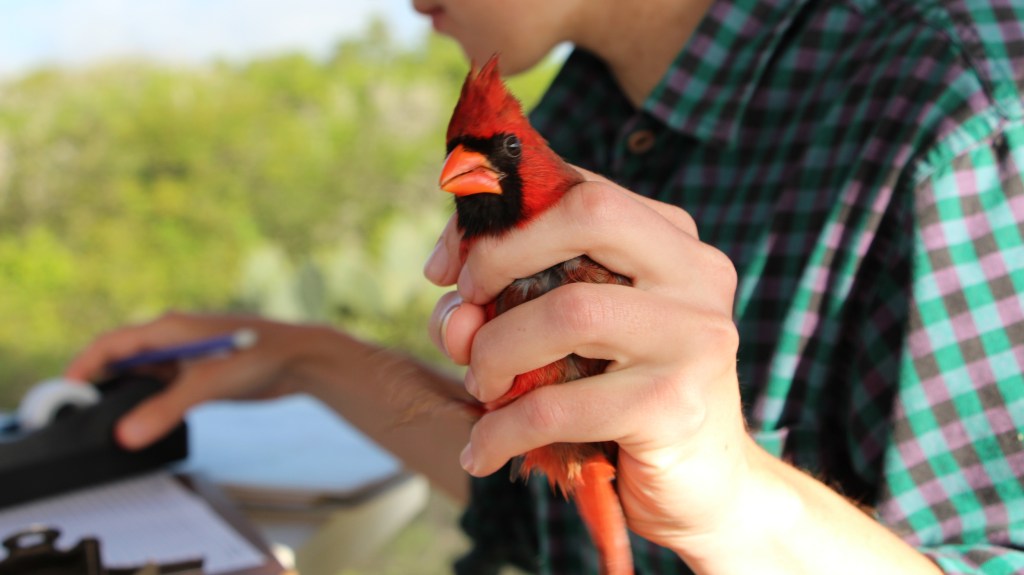



Wow, this is an effect of climate change that I hadn’t considered; pathogens moving north and birds as vectors.